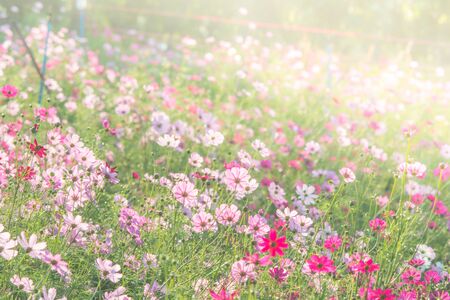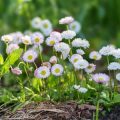Understanding the British Climate
If you’ve ever watched your family prepare for a typical British day out, you’ll know how unpredictable our weather can be. One minute, we’re packing sun hats and sandwiches; the next, it’s wellies and waterproofs all round! This same variety shapes the British countryside and the wildflowers that thrive here. Our island’s climate is famously changeable—cool summers, mild winters, and plenty of rain showers in between. These conditions mean that not every wildflower will feel at home in our gardens or meadows. Just as our families adapt to sudden downpours with a cheerful dash indoors or a quick swap to raincoats, wildflowers must also be resilient and ready for whatever the skies may bring. By understanding these unique weather patterns, we can make wise choices about which wildflower species are most likely to flourish alongside us, bringing colour and life to our outdoor spaces throughout the year.
2. Native Versus Non-Native Species
When choosing wildflowers for your British garden, deciding between native and non-native species is much like picking fresh produce from your local allotment versus importing exotic ingredients. Just as a family meal prepared with locally grown vegetables feels wholesome and connected to the community, planting native wildflowers strengthens the bond between your garden and its surrounding environment.
Native wildflower species have evolved alongside Britain’s climate, soil, and wildlife. They offer essential food and shelter to bees, butterflies, and birds that call the UK home. On the other hand, non-native wildflowers may look appealing but can disrupt these delicate relationships, sometimes overwhelming local flora or failing to support local pollinators.
The Benefits of Choosing Native Wildflowers
| Aspect | Native Species | Non-Native Species |
|---|---|---|
| Supports Local Wildlife | Provides food and habitat for native insects and birds | May not meet needs of local pollinators or animals |
| Environmental Impact | Helps maintain balanced ecosystems | Can become invasive or compete with native plants |
| Adaptation to Climate | Well-suited to British weather patterns and soils | May struggle in local conditions or require more care |
| Cultural Connection | Reflects British countryside traditions and heritage | Lacks historical or regional significance |
Family Gardening Wisdom: Why Local Matters
Just as you might encourage children to try carrots they’ve helped grow at home, nurturing native wildflowers invites young ones to observe the wonders of British nature up close. By choosing species that belong here, we foster thriving mini-ecosystems right outside our doorsteps—an ongoing family adventure rooted in respect for the land.
![]()
3. Top Wildflower Choices for British Gardens
When it comes to sprinkling a little magic across your garden, choosing native wildflowers is like inviting a cast of colourful characters to a family picnic. Each one brings its own unique charm and resilience, perfectly suited for Britain’s ever-changing weather—be it a sunny spell or a drizzly afternoon!
The Dainty Bluebell: Woodland Fairy of the North
Imagine wandering through a shady woodland in spring and spotting carpets of bluebells waving gently like tiny fairy hats. These enchanting blooms love the cooler, damp woodlands found from Scotland down to southern England. Planting bluebells at home lets you bring a touch of woodland magic to your very own patch, and children will delight in searching for these “hidden fairy lanterns” each spring.
The Cheerful Cornflower: Meadow’s Little Firework
Cornflowers are like little blue fireworks bursting from the grass, brightening up meadows from East Anglia to the rolling hills of Wales. Their vibrant colour attracts busy bees and butterflies—perfect companions for curious young gardeners who fancy themselves nature detectives on the lookout for pollinator pals!
The Bold Poppy: Fields Aflame with Stories
Poppies are the storytellers of British fields, nodding their fiery red heads in remembrance and celebration. From the countryside of Kent to Yorkshire’s open spaces, poppies thrive in sunny spots. Parents and children can plant these together as living reminders of history—and watch as their garden blazes with colour come summer.
Oxeye Daisy: The Garden’s Smiling Face
No wildflower family would be complete without the cheerful oxeye daisy, whose big white petals look like smiling faces turned up to greet the sun. Found along country lanes and in urban parks alike, these daisies are tough cookies—resilient and full of joy, much like a child discovering something new.
Creating Your Own Wildflower Wonderland
Mixing these native wildflowers is like painting with nature’s brightest palette. Invite your children to help choose seeds, plant them together, and wait for the parade of colours—every flower has a story to tell and an adventure to inspire. With every bud that blossoms, your family will be weaving memories as bright and beautiful as any British summer meadow.
4. Soil, Sun, and Shelter: Matching Flowers to Your Patch
Choosing wildflowers for your British garden is a bit like dressing your children for a day out—if you want everyone to thrive, you need to know what the weather’s doing! Before picking your seeds, take a moment to “get to know” your patch of earth. Is it sandy and free-draining, or more like sticky clay after rain? Does the sun flood in all day, or does shade from trees or fences offer shelter? Each wildflower has its own preferences, just as each family member might choose a different jacket for a windy walk on the moors.
Understanding Your Garden’s Personality
Your garden’s soil type, sunlight exposure, and protection from the elements are key. Here’s a simple way to match wildflowers with their ideal conditions:
| Condition | Wildflower Examples | Why They Suit |
|---|---|---|
| Sandy & Dry Soil (full sun) |
Poppy, Cornflower, Viper’s Bugloss | These flowers love well-drained ground and don’t mind droughts—perfect for sunny spots. |
| Clay & Moist Soil (partial shade) |
Meadowsweet, Ragged Robin, Oxeye Daisy | Thrive in heavier soils that hold moisture and cope well with less direct sunlight. |
| Sheltered/Urban Gardens | Cowslip, Red Campion, Wild Marjoram | Tolerant of wind breaks and city microclimates; they suit smaller, protected spaces. |
Dressing Your Patch for Success
Just as you wouldn’t send your child out in shorts during a rainy British afternoon, don’t plant sun-loving wildflowers in a shady corner. Observe how light moves through your garden over the course of a day and feel the soil after rain to understand its character. This mindful matching means your wildflowers will flourish—bringing colour and life to every nook of your British patch.
5. Wildflower Gardening for Wildlife
One of the most heartwarming joys of choosing the best wildflower species for British climates is watching your garden come alive with local wildlife. Planting native wildflowers doesn’t just add a splash of colour to your outdoor space—it also creates a haven for bees, butterflies, and birds. These creatures rely on specific plants for food and shelter, so by including varieties like oxeye daisy, red clover, and cornflower, you’re offering them a lifeline. Imagine stepping outside with your children and spotting a busy bumblebee collecting nectar or a fluttering butterfly resting on a petal. It’s a magical sight that sparks curiosity and appreciation for nature. Encouraging families to work together in planting and caring for wildflowers fosters not only teamwork but also an understanding of the intricate connections within our environment. As you tend your patch, you’ll discover endless opportunities to learn—why bees love certain blooms, which flowers attract goldfinches, or how different seasons bring new visitors to your garden. By nurturing these living lessons together, you’re sowing seeds of wonder that will grow alongside your wildflowers for years to come.
6. Caring for Your Wildflower Patch as a Family
Once you’ve chosen the perfect wildflower species for your British garden, the real adventure begins—nurturing your patch together as a family. Much like guiding a child’s growth, tending to wildflowers requires patience, teamwork, and a sense of wonder at every new blossom. Here are some tips to help you maintain your wildflower area throughout the changing British seasons while enjoying every step as a family.
Spring: Sowing Seeds and New Beginnings
Early spring is the ideal time to sow most native wildflower seeds. Gather everyone for a fun seed-sowing session, scattering seeds by hand and gently pressing them into the soil. Use this opportunity to talk about how each tiny seed holds the promise of colourful blooms ahead—just like nurturing dreams together as a family.
Summer: Watching Growth and Weeding Together
As shoots begin to appear, make regular strolls through your wildflower patch a family ritual. Take turns spotting new flowers, insects, or birds attracted by your efforts. Light weeding may be needed—show children how to identify unwanted plants and gently remove them, emphasising teamwork and shared responsibility.
Autumn: Harvesting Seeds and Reflecting on Success
When late summer arrives and flowers start to fade, it’s time to collect seeds for next year. Teach children how to carefully gather mature seed heads and store them in labelled envelopes. This practice not only sustains your wildflower patch but also creates a tradition of saving and sharing nature’s gifts within your family.
Winter: Rest and Planning Ahead
During winter, your patch will rest under frost or gentle rain—a reminder that all living things need periods of stillness. Take this quiet season to plan next year’s improvements as a family, perhaps over hot cocoa by the window while watching robins hop between dried stems. Dream up new colour combinations or habitats you’d like to encourage come spring.
Embracing Teamwork and Shared Joy
Caring for wildflowers is about more than gardening—it’s about cherishing shared moments outdoors, learning from nature, and celebrating each small success together. Just as each member of your family brings unique strengths, each wildflower contributes its own beauty to the patch. By working hand-in-hand through the seasons, you’ll not only help nature thrive but also nurture bonds that grow ever stronger with time.


